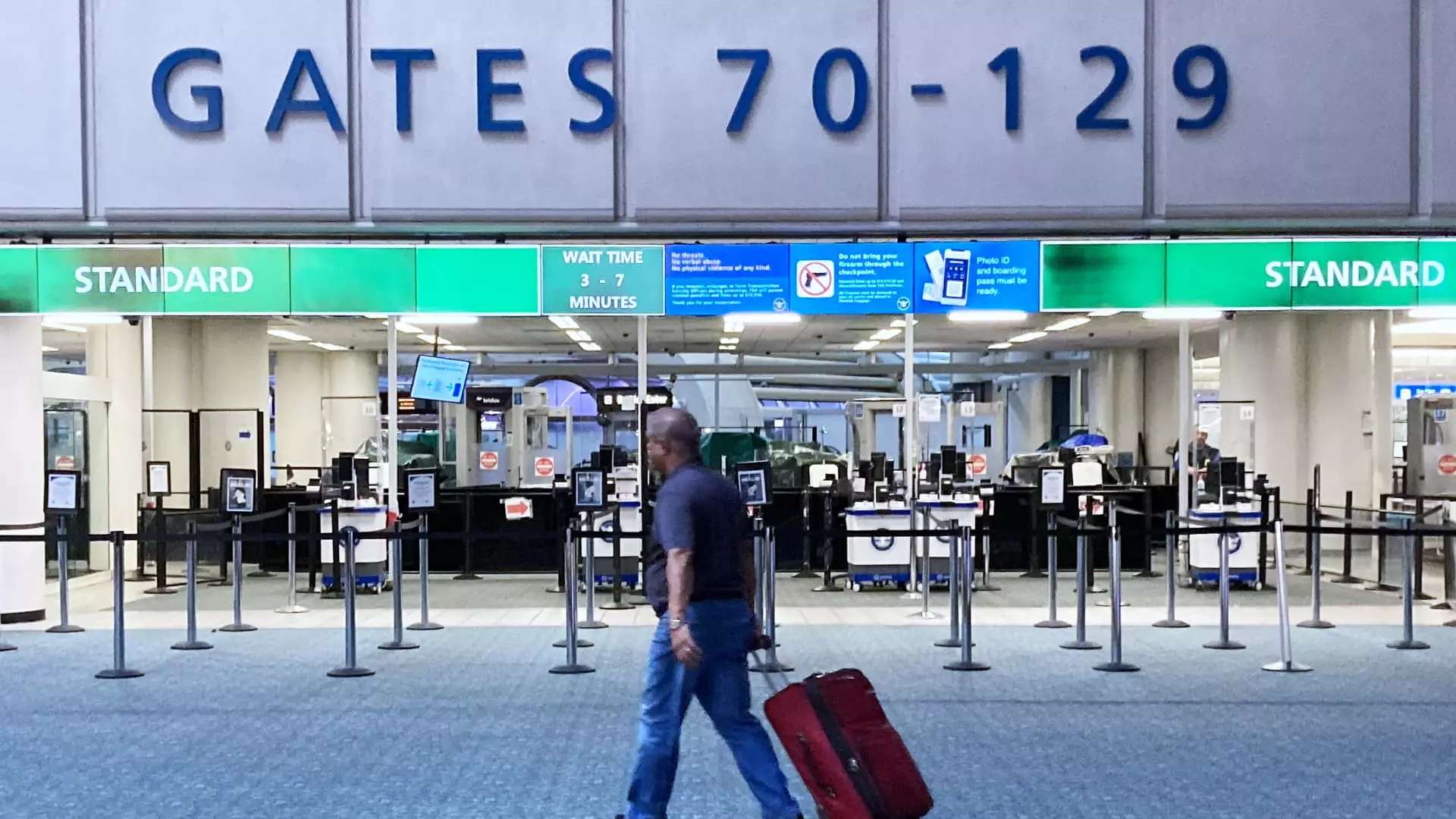As the holiday season approaches, the United States government finds itself teetering on the brink of a shutdown. Recent votes in Congress have revealed a profound divide among lawmakers, resulting in the rejection of a critical short-term funding bill supported by President-elect Donald Trump. If negotiations fail to bear fruit, the government could come to a halt as early as 12:01 a.m. ET on Saturday, potentially leaving hundreds of thousands of federal employees furloughed at the worst possible time.
Despite the looming threat of a shutdown, the travel industry appears determined to proceed with operations, especially airline service. Airlines are gearing up for what they anticipate will be the busiest travel period on record, with forecasts suggesting that a staggering 40 million passengers will pass through airport security from now until January 2. United Airlines has reported an increase in bookings, expecting to transport 9.9 million travelers from December 19 to January 6—a remarkable 12% rise compared to the previous year.
The federal government designates a considerable number of employees within the aviation sector as ‘essential.’ This classification includes over 14,000 air traffic controllers and nearly 60,000 Transportation Security Administration (TSA) agents. Although these workers are crucial to maintaining safety and airport functionality, they would face the grim reality of working without pay during the shutdown. David Pekoske, the TSA’s administrator, conveyed this unsettling message on social media, emphasizing the agency’s commitment to ensuring traveler safety even in the face of budgetary constraints.
Travel Disruptions on the Horizon
While air traffic services are set to continue, the implications of an extended shutdown raise concerns about increased wait times at airports. The TSA has already warned travelers to expect potential delays as the burden of high passenger volume collides with a reduced workforce. The precedent of the previous shutdown, which persisted for longer than a month from late 2018 into early 2019, looms heavily. That shutdown resulted in significant procedural disruptions, particularly in air traffic control, exacerbating congestion in an already busy airspace corridor along the U.S. East Coast.
The impact of a potential shutdown is further compounded by leadership uncertainties within the Federal Aviation Administration (FAA). Following the announcement that current FAA chief Mike Whitaker will step down on January 20, coinciding with Trump’s inauguration, the administration faces a leadership vacuum during an essential period of modernization. Delta Air Lines CEO Ed Bastian recently expressed the urgent need for the new FAA administrator to make advancements in air traffic control systems and prioritize staff recruitment.
As Congress grapples with conflicting priorities and the clock ticks down, both government employees and travelers brace for uncertainty. The outcome of these negotiations will have far-reaching repercussions, jeopardizing not only the livelihoods of federal workers but also the holiday travel plans of millions of Americans. Despite reassurances from airline executives and the TSA, travelers must prepare for the possibility of disruptions as the nation stands on the precipice of a shutdown. This holiday season, the stakes are not just about travel; they are inherently linked to governance, economic stability, and public trust.

Leave a Reply